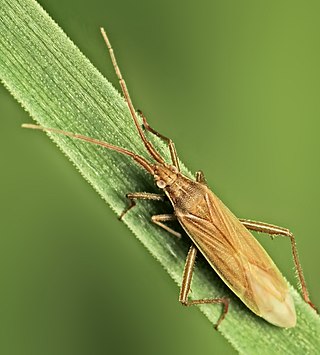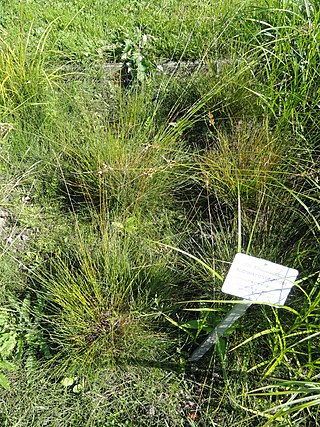There are over 190 vascular plant species on the Norwegian Arctic archipelago of Svalbard. This figure does not include algae, mosses, and lichens, which are non-vascular plants. For an island so far north, this number of species constitutes an astonishing variety of plant life. Because of the harsh climate and the short growing season, all the plants are slow growing. They seldom grow higher than 10 cm (4 in)

The ringlet is a butterfly in the family Nymphalidae. It is only one of the numerous "ringlet" butterflies in the tribe Satyrini.

This is a list of taxa comprising the flora of the Antipodes Islands. It includes some species known as megaherbs.
Phaeosphaeria herpotrichoides is a fungal plant pathogen that infects the commercial crops rye and wheat.

The International Tundra Experiment (ITEX) is a long-term international collaboration of researchers examining the responses of arctic and alpine plants and ecosystems to climate change. Researchers measure plant responses to standardized, small-scale passive warming, snow manipulations, and nutrient additions. Researchers use small open-top chambers (OTCs) to passively increase mean air temperature by 1-2 °C. The ITEX approach has been validated by tundra responses at the plot level. The network has published meta-analyses on plant phenology, growth, and reproduction, composition and abundance, and carbon flux. The ITEX network consists of more than 50 sites in polar and alpine locations around the world.
The Davidiellaceae are a family of fungi in the Ascomycota, class Dothideomycetes. The family was defined in 2006 based on the results of molecular phylogenetic analysis of various Dothideomycetes species, and contains the genus Davidiella and six other genera.

Stenodema calcarata is a species of bug from Miridae family, that can be found in Europe and across the Palearctic to Central Asia, the Russian Far East, Siberia, northern China, Korea and Japan.

Lon melane, also known as the umber skipper, is a butterfly of the family Hesperiidae. It is found in California, southern Arizona, Baja California, the highlands of Mexico and Central America. The habitat consists of desert foothills, grassy areas, streamsides, roadsides, yards, parks and open oak woodland.

The Vatnsmýrin Nature Reserve is a protected moorland in Reykjavík, Iceland. The reserve provides a water source for Tjörnin Lake and is a nesting ground for birds. It borders the Nordic House and the University of Iceland. The area within the Reserve including drains and fences, and measures 37,026 square metres (398,540 sq ft). Eighty-three species of vascular plants are documented. Biodiversity has been inhibited due to invasive animals and plants as well as industrial waste.

Carex myosuroides, the mouse-tail bog sedge, is a species of sedge with a circumboreal distribution. It is the only known sedge to have ectomycorrhizal associations.






